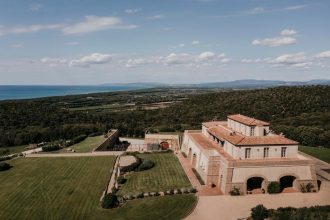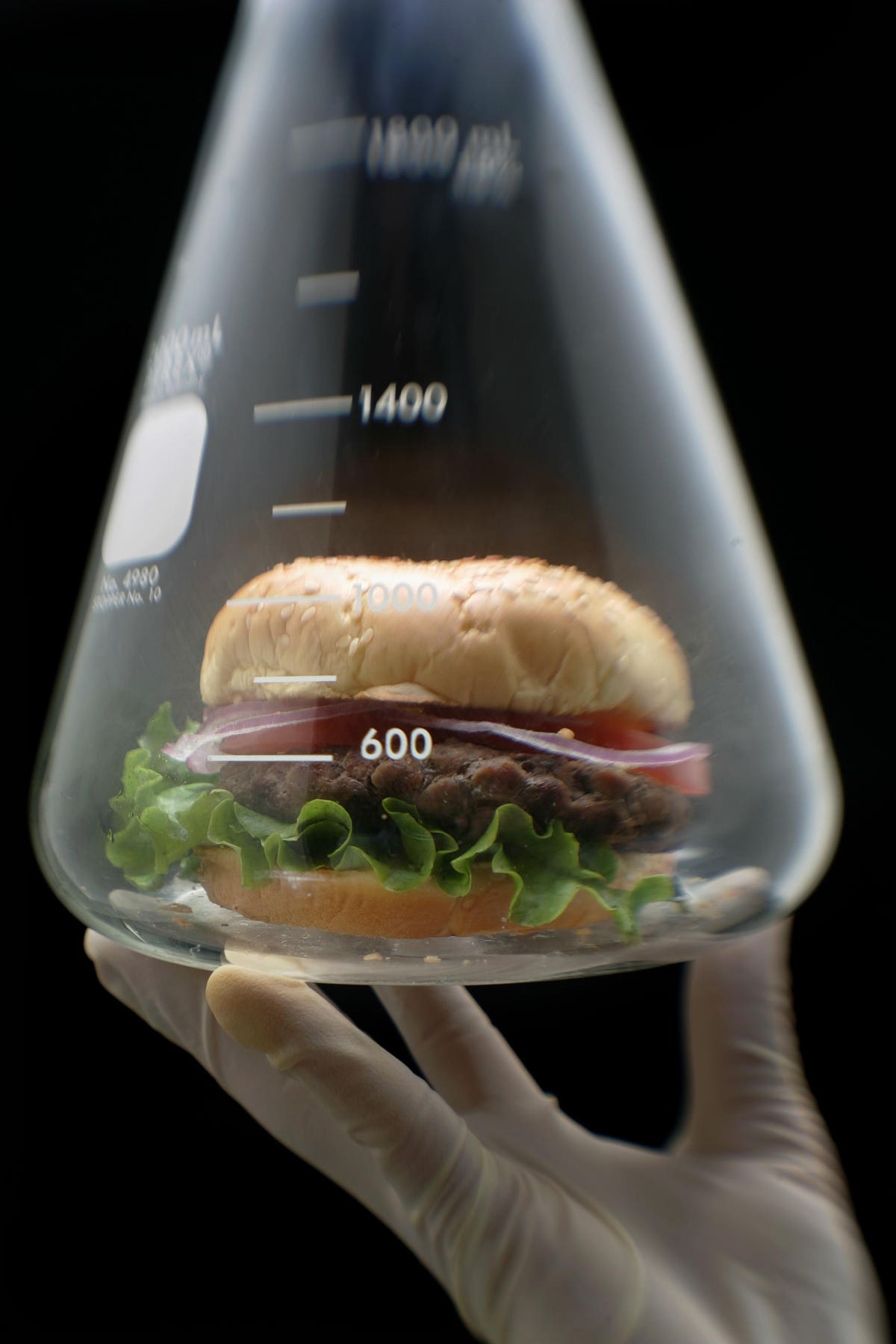Is Plenty truly a “humane” and “affordable” growth medium alternative?
Last week, biotech meat start-up Omeat announced its new B2B “cell culture supplement” they are calling Plenty. It purports to be an “ethical alternative to fetal bovine serum” by extracting plasma from adult cows on a farm. They claim that “Plenty is sourced from regenerative factors that are extracted humanely from healthy, live cows that graze freely on Omeat’s farm.”
The cell growth medium conundrum
One of the numerous challenges facing cell-cultured or biotech meat companies is the need for a steady supply of growth medium for the cells to replicate. Research labs have traditionally used fetal bovine serum (FBS) for this purpose, so biotech meat companies had little choice but to adopt its use as well.
The serum is ideal for promoting cell growth, but is obtained in a highly questionable manner ethically: a cardiac puncture (likely painful) of the fetus when a pregnant cow is slaughtered.
Moreover, using FBS is cost prohibitive for lab-grown meat given the need to scale up lab meat production massively to begin to make a dent in animal meat consumption.
Enter Omeat’s Plenty product.
Using buzz terms such as “ethical”, “regenerative”, “environmentally friendly”, and “slaughter-free”, Omeat makes two separate sets of claims worth examining. One related to animal welfare, and the other regarding economics and scalability.
(I tried to reach out to the company with my questions via four separate email addresses, three at Omeat and one at Plenty. The three Omeat emails bounced back and my email to Plenty was never returned, despite trying twice.)
Animal welfare claims
Claim that this is an ethical alternative to FBS.
The press release calls Plenty “an ethical replacement” for FBS. This claim was repeated by multiple news outlets, including AgFunderNews and FoodIngredientsFirst, and appeared in Green Queen’s headline.
So I asked: How is taking plasma from cows on a weekly basis more ethical than taking serum from a fetus? Is it because a fetal heart puncture resulting in death is assumed to be worse / more painful than taking plasma from live cows weekly?
Claim that Plenty is “slaughter free”.
The company has repeatedly claimed their process is “slaughter free” and extolls how their approach means “we don’t have to sacrifice the cow. They also say the cows they harvest from were “rescued from nearby farms”.
But what happens to the animals as they age out and are no longer needed or get too sick? Are they sent to slaughter, just as dairy cows are at the end of their usefulness as milk machines?
Also, with FBS, the pregnant cow is already being slaughtered so not using FBS does not save any cows. In fact, some have argued that it’s unethical not to use the serum since it’s so useful in medical research and it would otherwise go to waste.
Claim that the blood / plasma is extracted humanely.
The company says this in multiple ways. The word “humane” shows up seven times on the “process” page of their website. And according to an interview with the CEO in AgFunderNews:
“The plasma is withdrawn in a humane, pain-free process much the same as that used in human plasma donation. Omeat hooks up cows to a plasmapheresis machine that collects blood, separates out the plasma and returns the remaining blood components to the cow.”
Their press release says they “have developed procedures for collection that rely on positive reinforcement and that they prioritize the comfort and overall well-being of the animals”.
A few questions I posed:
· What does “positive reinforcement” for the cow mean exactly?
· How are you prioritizing comfort when the animals are hooked up to machines?
· What is the risk of infection? How are you ensuring that the cows remain healthy through weekly draws? What happens when cows get infected or otherwise get sick?
· Can we see video of this process?
· Did you create your own animal welfare standards? If so, why not adopt already established animal welfare standards with a third-party certification?
Economics and sustainability
The company claims that their process is more economical than FBS because the latter is so expensive, which it is. But they don’t do any math to back up their claims.
The CEO simply makes bold claims like this one:
“With just one cow providing plasma once a week, we can create many cows’ worth of beef annually. This means we can feed the planet with only a fraction of the current number of animals currently used in meat production.”
So I asked: How many is “many” and how do you arrive at this conclusion? In other words, how much plasma is needed from how many cows to make how much meat?
I asked biotechnology expert and professor Paul Wood the amount of plasma that can be drawn from a cow, and he told me about 3 liters from each bleed, and that we can assume 50 percent of the blood results in plasma.
The company says they currently have 75 cows on their farm, so here is some math:
Assuming 1.5 liters of plasma times 52 times a year times 75 cows equals 5,850 liters of plasma a year. I asked Omeat: How much biotech meat can be made from this?
When I did not hear back from the company, I asked scientist Samir Qurashi (who formerly worked at biotech meat company Upside Foods) for his reaction to the question. He said: “They would have to bleed at minimum thousands of more cows weekly all year around to begin to make a viable amount of cell-based meat”.
I also asked the company how many more cows are needed to make a dent in current beef production levels? Qurashi concluded they would need “exponentially more, even when using the kindest predictions”.
Costs of maintaining cows on a “regenerative farm”.
The company says their “cows graze freely on 30 acres of land on Omeat’s farm in California.” They explain:
“we converted a piece of severely-degraded land into a lush grassland. We planted phytonutrient-rich grasses ideal for a cow’s diet as well as local growing conditions. We’ve implemented a number of regenerative practices for soil health like no tilling, cover crops, rotational grazing, and natural fertilization by our free-roaming herd. The vegetation on our farm holds about 30,000 gallons of water per acre, minimizing runoff or the need for watering.”
Sounds lovely. And expensive. A few more questions I posed:
· What were the costs of creating this farm and of maintaining it into the future?
· What are the costs of housing, feeding, and caring for the current number of 75 cows? Will that number need to grow to make more plasma?
The company says it will “work with existing farmers and ranchers to implement Omeat’s approach on their farms”, so I asked:
· How much will it cost to implement this strategy?
· Are you approaching dairy farmers? Why will they sell you dairy cow’s plasma and risk their dairy cows getting sick?
· Are you planning to “convert” dairy farms to your plasma farm model? Why would dairy farmers do this? Most “farms” are actually mega operations that are destroying small farms, so who are you targeting exactly?
· Is this how you plan to “expand” your number of cows?
· Do you also plan to add cows to your current farm? How many?
Costs of maintaining high animal welfare standards
The company is especially proud of their “high animal welfare standards”
These include “natural living behaviors”, “nutrition management” and ongoing veterinary care. Here is how they describe that:
“Our herd is entitled to immediate veterinary attention when sick or injured and benefit from routine proactive veterinary care to keep them healthy or catch potential health concerns early.”
While this sounds great, it also sounds expensive. So I asked:
· How much does this cost and how is it sustainable as you add more cows?
· How is this model sustainable in general?
· If the idea behind biotech meat is to do away with the animal, how does this make business model make any sense?
Professor Paul Wood suggested:
“It would make more sense to just bleed animals prior to slaughter, no need to transfuse them, just collect the plasma, that would be very cheap. Technically and financially it makes sense, but does not play to their image of a cow living out its life as a blood donor. The whole business model makes little sense.”
Very little sense.
Finally, vegan chef and founder of Miyoko’s, Miyoko Schinner made an important observation on LinkedIn about what’s wrong in the bigger picture here:
“The most egregious thing — this approach to ‘solving’ the future of food further consolidates power in the companies with the most money, robbing smaller producers and farmers of opportunities to compete, further continuing the Big Food /Ag approach that is destroying communities, farmers, and small producers.”
Speaking of money, so far the company has raised $40 million, which is not a lot compared to some others that have raised hundreds of millions. Let’s hope we can get these questions answered before investors throw more money at this disturbing business model, running the risk of it becoming yet another biotech scandal.
Read the full article here





